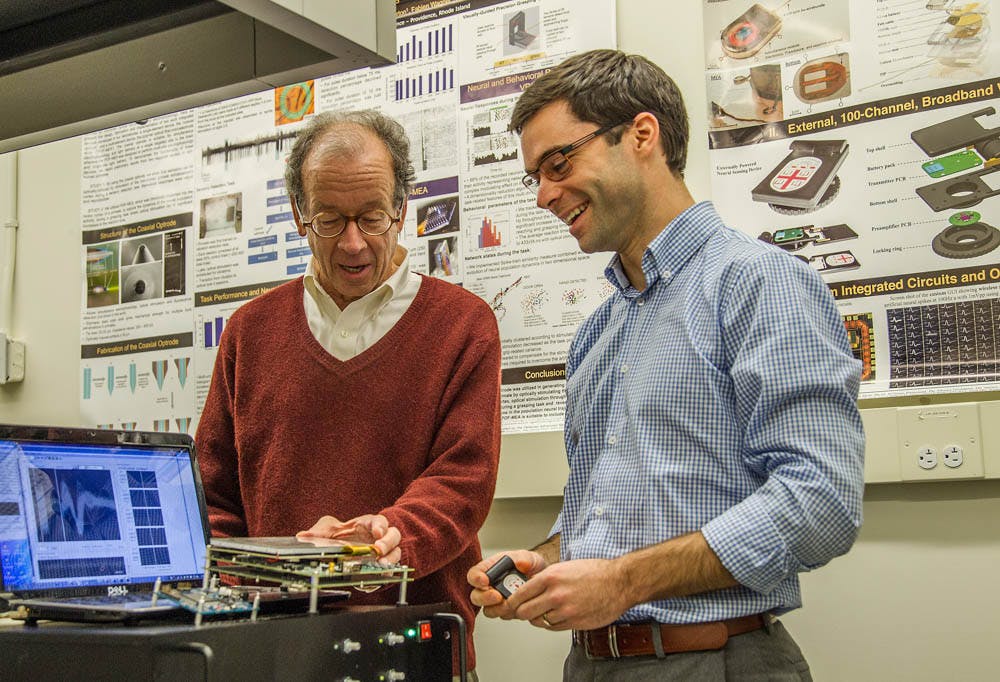A team of international scientists, including two Brown professors, has successfully developed a brain-spinal interface that helps monkeys with severed spinal cords walk again.
The device, described Nov. 9 in the journal Nature, is the first of its kind to allow paralyzed primates to regain control of their limbs using neural feedback.
When there is an injury in the spinal cord, the brain’s commands cannot move past it, leading to paralysis in the affected areas, said David Borton, assistant professor of engineering and co-author of the study. The two-part device works by collecting movement commands from within the brain and sending them to a computer that decodes the signals. The computer then sends the decoded movements to a stimulator located past the spinal cord injury, and it enables the monkey to move its paralyzed leg as intended.
The interface consists of a wireless neurotransmitter as well as the implanted spinal cord stimulator, which activates movement in real time.
In the study, each monkey was paralyzed in one leg and walked using its remaining three legs. But as the brain-spinal interface took effect, the monkeys began to use all four legs in a semi-normal gait.
While Borton was excited about the results, he said he “look(s) forward to one day delivering a fully implanted solution that would allow true mobility of (a human) patient to use the locomotor support system in their daily life.”
The challenge in using the device in paralyzed humans is that the translation from brain signal to limb movements is difficult to generalize across individuals, Borton said. This is because the trillions of connections in the brain develop differently according to life experience; they are unique to the individual and can also change over time. “We’re not even close to find(ing) generalizations across people. It’s a very big challenge. It might not even be tenable in people,” Borton added.
Additionally, each of the components of the brain-spinal interface must be proven to be safe in humans before testing is possible, Borton wrote in a follow-up email to The Herald.
While this is a new feat, it is “not good enough yet for independent walking,” wrote John Donoghue, professor of neuroscience, in an email to The Herald. Donoghue was not a co-author of the study, though he helped develop the brain sensor used in the study along with Richard Normann, emeritus distinguished professor of bioengineering and emeritus professor of ophthalmology and visual science at the University of Utah.
The study builds on the work by the BrainGate collaboration, a team that includes researchers from Brown, Case Western Reserve University and Massachusetts General Hospital, according to the press release. BrainGate focuses on developing technologies to restore the functions of people with neurologic disease, injury or limb loss.
In its research, BrainGate uses the brain-computer interface that was initially developed at Brown. In a 2012 study, this brain-computer interface allowed people with severe paralysis to control a robotic arm using their brain activity. The study was led by Donoghue and Leigh Hochberg, professor of engineering at Brown and neurologist at Massachusetts General Hospital.
“This (work) has relevance not only toward the restoration of gait for people with paraplegia, but (also) more broadly in the development of closed-loop neural interfaces that could help people with other neurologic, cognitive or affective disorders,” Hochberg wrote in an email to The Herald.
Braingate is led by Hochberg, Donoghue, Borton and Arto Nurmikko, professor of engineering and professor of physics.





